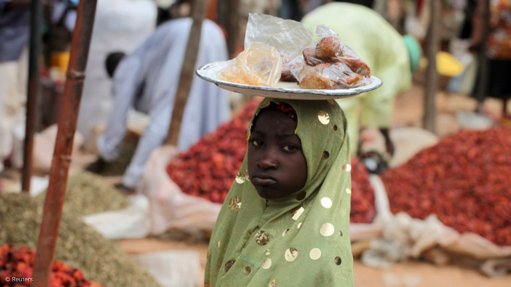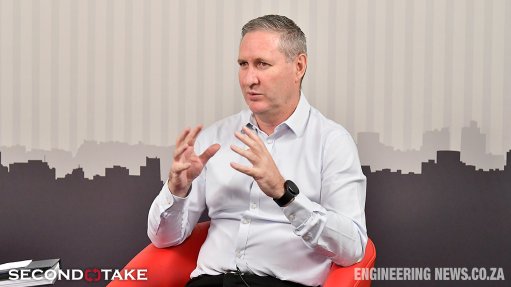Universal health coverage (UHC) pathways for South Africa: areas of misalignment between stakeholders on the NHI BIL require further engagement
This article has been supplied as a media statement and is not written by Creamer Media. It may be available only for a limited time on this website.
South Africa’s proposed approach to achieving Universal Health Coverage (UHC) and health financing reform is articulated in the Draft National Health Insurance (NHI) Bill, released in 2019 for comment and discussion. The principles guiding the reform process, particularly in relation to equity, access and an orientation to primary health care can be traced back to the ANC Health Plan of 1994. There was an inflection point in the reform process in 2007 towards a single payer and purchaser system, away from a system that builds off existing medical scheme infrastructure. It was a change in direction that remains contentious.
In the 12 years since the shift in policy direction, there have been significant contextual changes which do not appear to reflect in how policy has developed. Furthermore, the recent Health Market Inquiry process put forward a number of proposals for strengthening the health system which have largely not been incorporated into the policy process.
South Africans are experiencing reduced trust in the State, a tighter fiscal space, and a more constrained health service delivery platform. Economic and health system vulnerabilities have been accentuated by Covid-19. Internationally, we have seen previously lauded UHC systems run into financial sustainability challenges, questions raised about the efficacy of strategic purchasing, and a move towards value-based contracting approaches. However, these systems have also weathered Covid-19 better than other systems, elevating the need for a more integrated and equitable system.
This requires careful thinking about the shortcomings and areas of misalignment between stakeholders on the NHI Bill. The Inclusive Society Institute therefore commissioned a report which systematically identify these areas. The report draws on conversations with a wide range of stakeholders through a roundtable discussion that took place in Johannesburg in December 2020, as well as individual stakeholder discussions before and after the roundtable. The widely consultative process that informs this document included various stakeholders from Government, the political sphere, the private hospital sector, the medical schemes sector, doctor and specialist bodies and specific regulatory bodies.
Critical stakeholders agree on a need for UHC, due to inequity between the two health systems (public and private) in South Africa. There is also consensus on the need for wide engagement on the Bill to shape an effective health system and to build buy-in. Greater levels of collaboration between the public and private sector is welcomed by all stakeholders. Lastly, stakeholders are in agreement that primary healthcare is the appropriate entry point for the health system.
The areas of misalignment, however, out number the areas of alignment. Below we highlight four critical areas of misalignment. More information on other areas of misalignment can be found in the report.
- The proposal on a single purchaser creates risks: A single purchaser is mooted on the basis of economies of scale, reducing risk pool fragmentation and strategic purchasing. However, it is not clear that a single purchaser is necessary to achieve these objectives. There is a lack of evidence relative to alternatives. A single purchaser creates a large pool of funds raising concerns about corruption and accountability. There are also concerns relating to the inefficiency of centralisation and a reduction in local responsiveness. The concerns about a single purchaser are amplified by a lack of trust between stakeholders. To strengthen confidence, It is also more prudent to follow an approach that does not place all ones eggs in one basket.
- The NHI Bill limits the role of medical schemes to complementary cover: There remains a high degree of uncertainty in the role of medical schemes and the practicalities of providing complementary cover, particularly in the absence of an articulated benefit package. The impact on providers of being subject to a single purchaser raises the threat of a monopsony-induced brain drain. The economic ramifications of shutting down the private funding sector, including the impact on investor sentiment, are of concern. A reduced role for medical schemes is likely to result in an increase in out-of-pocket expenditure, the most inefficient form of healthcare financing. The financial and servicing pressure on the NHI Fund will be dramatically increased through the inclusion of medical scheme members. Furthermore, there exists no evidence to support the assumption that if you combine private sector (medical scheme) and public sector health expenditure, the amount will be equivalent to current total health expenditure - in part due to the shape of the tax instruments and the role of employer subsidies. Leakage from the system is likely to occur.
- Financial considerations have not been clarified: There are a wide range of financial concerns – most notably the absence of an accompanying financing paper. The uncertainty associated with the financial aspects cut across the lack of clarity on the inter-relationship between the benefit package and affordability, the likely financing mechanism, and a lack of publicly available costings. The risks associated with the benefit package being dependent on available funds are noted.
- There are substantial concerns about governance and accountability: There is concern about the relationship between the Minister of Health and the NHI Fund Board, and the role of the Minister across both purchasing and provider sides of the health system. The latter undermines the purchaser-provider split created in the Bill. The governance design is perceived to be vulnerable to corruption and poor accountability. Weaknesses across the range of health regulators (highlighted by the HMI) point to existing gaps in health system governance. Accountability is conceptualised as being in relation to clients, providers, across entities associated with the Fund and as a strategic purchaser – all four areas are found to be wanting.
The Institute reiterates its position that it is in support of universal and affordable access to healthcare in South Africa. Its research is aimed at exploring pathways in achieving the goals set out in NHI Bill. By highlighting areas of disagreement between stakeholders it does not take a position as to the validity of the arguments, nor does it express itself in favour one way or the other. The Institute is however of the opinion that the areas of contention in the bill require further engagement between stakeholders in order to arrive at positions of consensus. Critical interrogation of key sticking points between stakeholders is required in order to not only question the way forward proposed by the NHI Bill, but to also find a practical road ahead that can take all critical stakeholders along on the journey. Research is needed to inform a way forward that is cognisant of the shortcomings of the current system, both public and private, and the advantages and disadvantages of the proposed reforms.
Comments
Press Office
Announcements
What's On
Subscribe to improve your user experience...
Option 1 (equivalent of R125 a month):
Receive a weekly copy of Creamer Media's Engineering News & Mining Weekly magazine
(print copy for those in South Africa and e-magazine for those outside of South Africa)
Receive daily email newsletters
Access to full search results
Access archive of magazine back copies
Access to Projects in Progress
Access to ONE Research Report of your choice in PDF format
Option 2 (equivalent of R375 a month):
All benefits from Option 1
PLUS
Access to Creamer Media's Research Channel Africa for ALL Research Reports, in PDF format, on various industrial and mining sectors
including Electricity; Water; Energy Transition; Hydrogen; Roads, Rail and Ports; Coal; Gold; Platinum; Battery Metals; etc.
Already a subscriber?
Forgotten your password?
Receive weekly copy of Creamer Media's Engineering News & Mining Weekly magazine (print copy for those in South Africa and e-magazine for those outside of South Africa)
➕
Recieve daily email newsletters
➕
Access to full search results
➕
Access archive of magazine back copies
➕
Access to Projects in Progress
➕
Access to ONE Research Report of your choice in PDF format
RESEARCH CHANNEL AFRICA
R4500 (equivalent of R375 a month)
SUBSCRIBEAll benefits from Option 1
➕
Access to Creamer Media's Research Channel Africa for ALL Research Reports on various industrial and mining sectors, in PDF format, including on:
Electricity
➕
Water
➕
Energy Transition
➕
Hydrogen
➕
Roads, Rail and Ports
➕
Coal
➕
Gold
➕
Platinum
➕
Battery Metals
➕
etc.
Receive all benefits from Option 1 or Option 2 delivered to numerous people at your company
➕
Multiple User names and Passwords for simultaneous log-ins
➕
Intranet integration access to all in your organisation


















